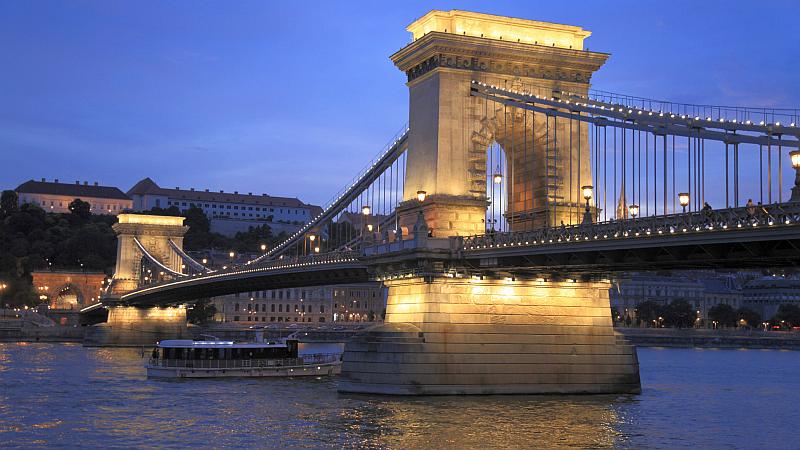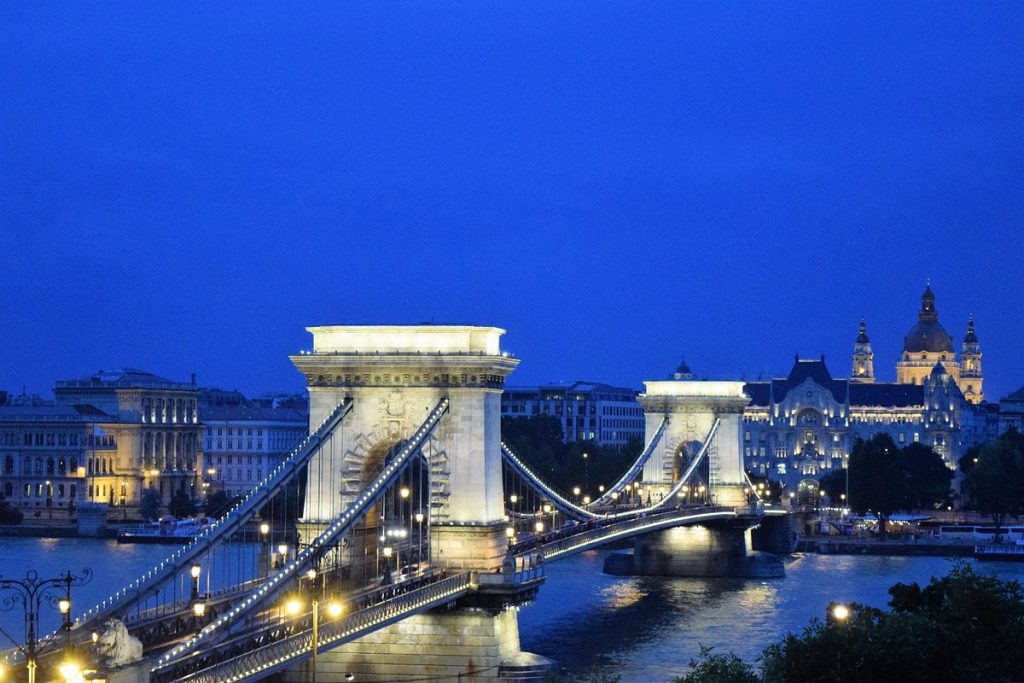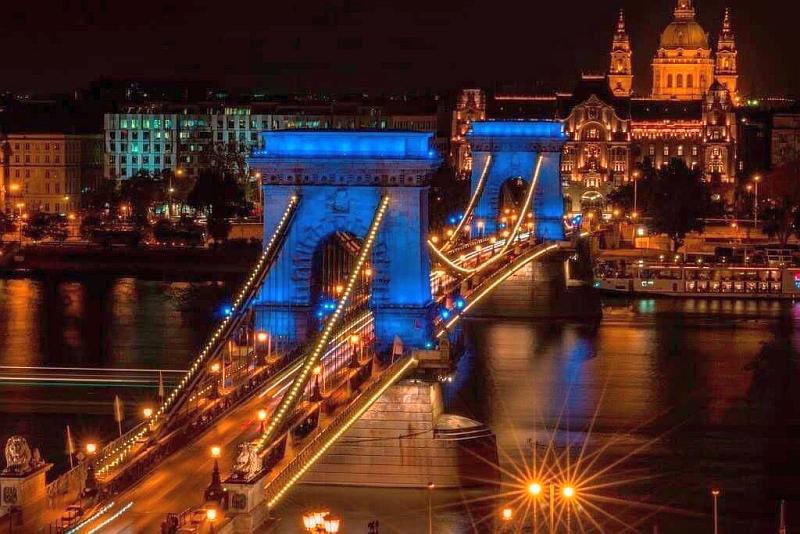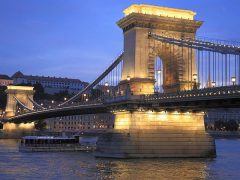Széchenyi Chain Bridge: Bridging Budapest’s History and Future
The Széchenyi Chain Bridge, gracefully arched over the Danube, is not just a bridge; it’s a symbol of Budapest’s architectural ingenuity and historical resilience. As an expert in the city’s landmarks, I invite you to explore the grandeur of this iconic bridge, a structure that seamlessly connects Budapest’s past, present, and future.
A Historic Link Between Buda and Pest
Before the Széchenyi Chain Bridge, Buda and Pest were separate entities divided by the Danube. The construction of this magnificent bridge in the 19th century, spearheaded by Count István Széchenyi and brought to life by William Tierney Clark and Adam Clark, represented a pivotal moment in the city’s history. It physically connected Buda and Pest and symbolized the unification of a nation and its people.
An Engineering Marvel of the 19th Century
Completed in 1849, the Széchenyi Chain Bridge was a marvel of its time. Its blend of sturdy stone pillars, intricate iron chains, and elegant arches was an engineering feat that symbolized Hungary’s ambition and technological advancement. The bridge was more than just a practical structure; it was a testament to human creativity and determination.
Resurrected with Modernity and Charm
The bridge’s journey through time includes its destruction during World War II and subsequent resurrection. The 2023 renovation of the Széchenyi Chain Bridge restored its structural integrity and infused it with modern touches while preserving its historical essence. This restoration underscores Budapest’s commitment to honoring its past while embracing the future.
A Symbol of Budapest’s Unwavering Spirit
Today, the Széchenyi Chain Bridge is a testament to Budapest’s unwavering spirit and resilience. It reminds the city of its ability to rise from the ashes and rebuild with greater strength and beauty. The bridge serves as a physical and symbolic link between the city’s rich history and its dynamic future.
A Journey into the Heart of Hungary’s History
Walking across the Széchenyi Chain Bridge is more than just a crossing; it’s a journey into the heart of Hungary’s history. The bridge offers a unique vantage point to feel the pulse of Budapest, with panoramic views of the Danube, Buda Castle, and the city’s skyline.
An Enduring Symbol of Unity
The Széchenyi Chain Bridge is a testament to Budapest’s spirit of unity and progress. Whether admired from afar as it glistens in the evening light or experienced up close, the bridge represents the enduring bond between Buda and Pest and, by extension, the unity of Hungary.
Did you know about the Széchenyi Chain Bridge?
The Széchenyi Chain Bridge is one of Budapest’s most iconic landmarks and an engineering marvel of its time. Here are some well-established facts about this famous bridge:
- Inception and Construction: The Chain Bridge was the first permanent bridge across the Danube in Hungary. It was proposed by Count István Széchenyi, a leading figure in 19th-century Hungary, and named after him. Construction began in 1839 and was completed in 1849.
- Design and Engineering: The English engineer William Tierney Clark designed the bridge, which was built by Scottish engineer Adam Clark. It is a suspension bridge with a classic chain link design, a common design for long-span bridges in the 19th century.
- Dimensions: The bridge spans 375 meters (1,230 feet) in length and 14.8 meters (49 feet) in width. At the time of its construction, it was one of the largest suspension bridges in the world.
- Significance: The Széchenyi Chain Bridge was a symbol of advancement and connection for the city of Budapest, physically and symbolically linking Buda and Pest. It played a vital role in the city’s urban development.
- Destruction and Reconstruction: During World War II, the bridge was severely damaged and was rebuilt after the war. The reconstructed bridge was reopened in 1949, exactly 100 years after its original opening.
- Architectural Features: The bridge is noted for its majestic lion statues at each abutment, which were added in 1852 and have become iconic parts of its design.
- Cultural and Touristic Importance: Today, the Chain Bridge is a crucial transportation link and a tourist attraction. It offers stunning views of the Danube and is often featured in photographs and postcards of Budapest.
- Preservation and Renovation: The bridge has undergone several renovations to preserve its structural integrity and historical significance. These renovations ensure that the bridge remains safe and continues to be a symbol of Budapest’s architectural heritage.
The Széchenyi Chain Bridge, with its historical significance and architectural beauty, is not just a bridge but a symbol of Budapest’s resilience and the city’s ability to blend its rich history with modernity.
In conclusion, the Széchenyi Chain Bridge is a must-visit landmark for anyone exploring Budapest. Its historical significance, architectural beauty, and symbolic value make it stand out in the city’s landscape. As you traverse this iconic bridge, you are not just crossing a river; you are walking through a chapter of Budapest’s storied history, a chapter that continues to inspire and unite.










